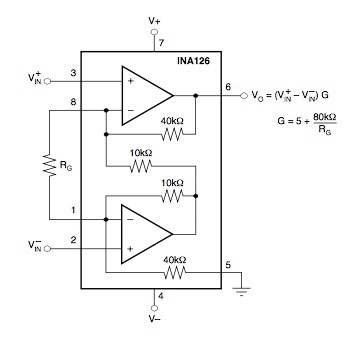I have a 5kg load cell that was chosen because of some existing conditions. Its output goes into a load cell amplifier who's output can be either 0-5 volts or 0-10 volts. The weight of its own physical holding structure accounts for 20% of its initial starting value i.e. 0-5 starts nearly at 1 volt and 0-10 is nearly 2 volts. I am only interested in the weight of up to 50 grams on the scale so theirs not much change in the output when the weight is added though I can magnify this through the use of the op amp. I would like the end result of my weighing of 0-50 grams to be a value close to 0-5 volts so that I can read it into an A to D converter on my micro.
Initially I just thought I could use a non inverting op amp for it but later realized it would only magnify my result and not provide me the difference needed for scaling. I then assumed I would need an instrumentation amplifier style circuit to provide me with a usable amplified value and picked the INA126. This should give me a usable value that I could amplify to my desired range by providing it a higher supply like say 12 volts and then use its starting range of 2 volts as my zero and amplify it up to 7 volts at my 50 grams full scale. The difference here being the desired 5 volts. The question here is if I can reach my 0-5 volt output (or close to) using just a positive power supply or in order to do so I have to use a dual +/- power supply and what then I should attempt to supply pins 2,4 and 5. Thank you.




